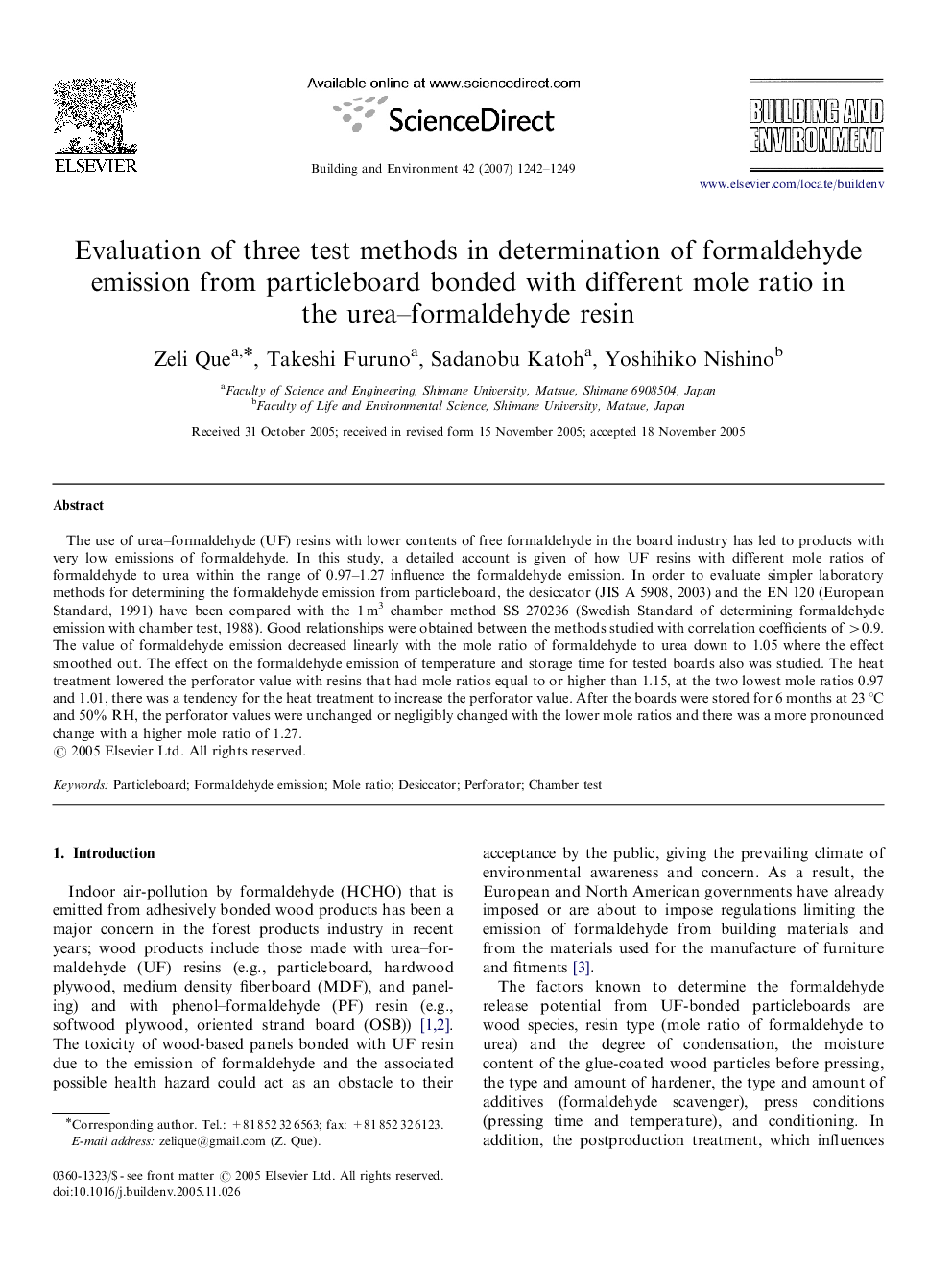| Article ID | Journal | Published Year | Pages | File Type |
|---|---|---|---|---|
| 250048 | Building and Environment | 2007 | 8 Pages |
The use of urea–formaldehyde (UF) resins with lower contents of free formaldehyde in the board industry has led to products with very low emissions of formaldehyde. In this study, a detailed account is given of how UF resins with different mole ratios of formaldehyde to urea within the range of 0.97–1.27 influence the formaldehyde emission. In order to evaluate simpler laboratory methods for determining the formaldehyde emission from particleboard, the desiccator (JIS A 5908, 2003) and the EN 120 (European Standard, 1991) have been compared with the 1 m3 chamber method SS 270236 (Swedish Standard of determining formaldehyde emission with chamber test, 1988). Good relationships were obtained between the methods studied with correlation coefficients of >0.9. The value of formaldehyde emission decreased linearly with the mole ratio of formaldehyde to urea down to 1.05 where the effect smoothed out. The effect on the formaldehyde emission of temperature and storage time for tested boards also was studied. The heat treatment lowered the perforator value with resins that had mole ratios equal to or higher than 1.15, at the two lowest mole ratios 0.97 and 1.01, there was a tendency for the heat treatment to increase the perforator value. After the boards were stored for 6 months at 23 °C and 50% RH, the perforator values were unchanged or negligibly changed with the lower mole ratios and there was a more pronounced change with a higher mole ratio of 1.27.
